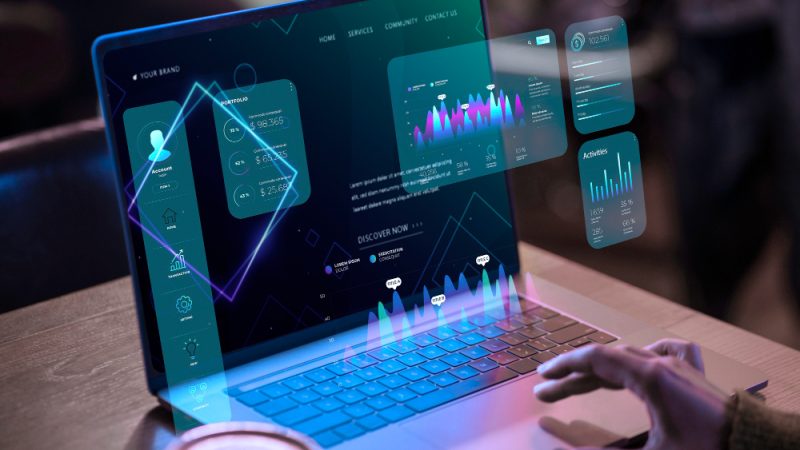What is driving the new Mini-LED display buzz?

Technology is rapidly evolving with the growing number of advancements on a regular basis. Mini LEDs (light-emitting diodes), one of the prominent innovations, are becoming more prevalent in display units like TVs, smartphones. They are also being used in the manufacturing of a variety of smart gadgets like smartwatches, laptops, and so on. In the future years, demand for mini-LEDs will be driven by rising demand for consumer electronic items offering exclusive performance. In addition, the growing penetration of smart devices is forecast to fuel the industry’s growth.
Mini LED technology improves regular LED TV technology by providing higher contrast control. A backlight is used in all LCD TVs to offer a light source for the viewing experience. LEDs, which now number in the hundreds, have been used as backlighting in recent years. Mini LED has taken it a step further by employing LEDs that are significantly smaller. They’re about one-fifth the size of ordinary LED backlights and have a glittery appearance, which is pretty advanced.
In addition, their low power consumption, and improved efficiency, properties will booster their demand in the coming years. LED TVs have gained significant popularity in the last few years. Furthermore, the rising demand from the consumers is forecast to offer ample growth opportunities for the market players.
Astute Analytica estimates that the global Mini-LED display market is expected to grow at a compound annual growth rate (CAGR) of 78.3% during the forecast period from 2021 to 2027. The Growing trend of mini- LED displays is fueled by many factors.
Benefits of Mini-LED display: The first and the prominent factor driving the growth of the Mini-LED display industry is the advantages of the product.
Mini-LED displays offer deep, dark blacks, bright and rich colors, and better contrast. The cost of employing mini-LEDs as a backlighting scheme for LCDs is one of the most significant advantages. LCD displays made using mini-LEDs are more practical and cost-effective than OLED, microLED, or quantum dot displays.
The fact that mini-LED displays have the same level of contrast and brightness as OLED displays makes them particularly appealing. Mini LED-capable TVs with backlighting offer better brightness and deeper blacks at a reduced cost. Consider mini-LED technology to be a less expensive version of OLED without the screen burn-in difficulties. Thus, all these benefits will contribute to a new change.
Increasing adoption: Mini-LED display industry is forecast to gain high traction in the coming years. Almost every major television maker has plans to show off new TVs featuring a mini-LED panel. LG and TCL have started implementing Mini-LEDs. While many people think of mini-LED as a new TV technology, some believe it may eventually make its way into laptops, tablets, and even smartphones.
Mini LED screens are likely to grow in popularity in the coming years, especially for automobile applications. Backlighting for automobile displays such as HUDs, dashboards, in-vehicle infotainment systems, and rearview mirror displays is growing using this technology. Some LED manufacturers have also unveiled efficient applications of tiny LED technology for external automobile illumination.
TCL has been marketing Mini-LED TVs for many years now. The company became the first TV manufacturer to introduce mini-LED TVs. This Chinese company unveiled its plans to introduce a new range of TVs integrated with next-gen Mini-LED technology at CES 2021. On the other hand, LG announced that its QNED TVs will be enabled with Mini-LED backlight technology.
Samsung Electronics and LG Electronics are forecast to introduce new TVs employing tiny light-emitting diode (LED) technology. Moreover, Apple may release a 27-inch iMac Pro with a Mini LED display.
The other renowned company in the TV space that has started implementing Mini LED is Hisense. Hisense has introduced its TV series for 2021 to outgrow competitors thriving in the Mini LED TVs market. A similar Hisense TV series is introduced by the company in Australia.
Advancements: Advancements in the Mini-LED display market are increasing. Companies are introducing efficient technologies featuring Mini LED displays. AUO has introduced various micro-LED backlight-enabled technologies. It also includes large-screen monitors, desktop monitors, laptops, and high-end applications like VR headsets and smart automobiles.
In addition, various prominent players, including Innolux Corporation, Japan Display, Inc., Everlight Electronics Co. Ltd., EPISTAR Corporation, and AU Optronics Corp. (AUO), and others are focused on developing advanced technology. LED manufacturers, including Lextar and EPISTAR Corporation, began the trade of mini LED backlight products for gaming notebooks and monitors that gained a high consumer base.
Growing demand for Mini-LED Display: The demand for Mini-LED displays has been increasing on a regular basis. Its applications in automotive, electronics, commercial and other industrial devices are boosting the growth of the Mini-LED display market. Moreover, Mini-LED technology is still in its early stages of development. Thus, some TV manufacturers would give a competitive alternative to OLED by incorporating some of its characteristics while reducing the costs associated with its screens.
All of these factors are contributing to the growth of the industry. The trend of Mini-LEDs is forecast to witness high growth in the coming years. Thus, it will benefit the market players thriving in the industry.
Athour’Bio
Emma is a freelance author and content strategist who offers to ghostwrite, blogging, and copywriting services. She has a keen interest in content marketing with a hold on social media management and market research. With more than five years of experience in writing for different domains, currently, she is exploring a new area of interest in “Information Technology”. Pitch her out to discuss interesting and niche IT domains that are blooming in integration with modern technologies.






